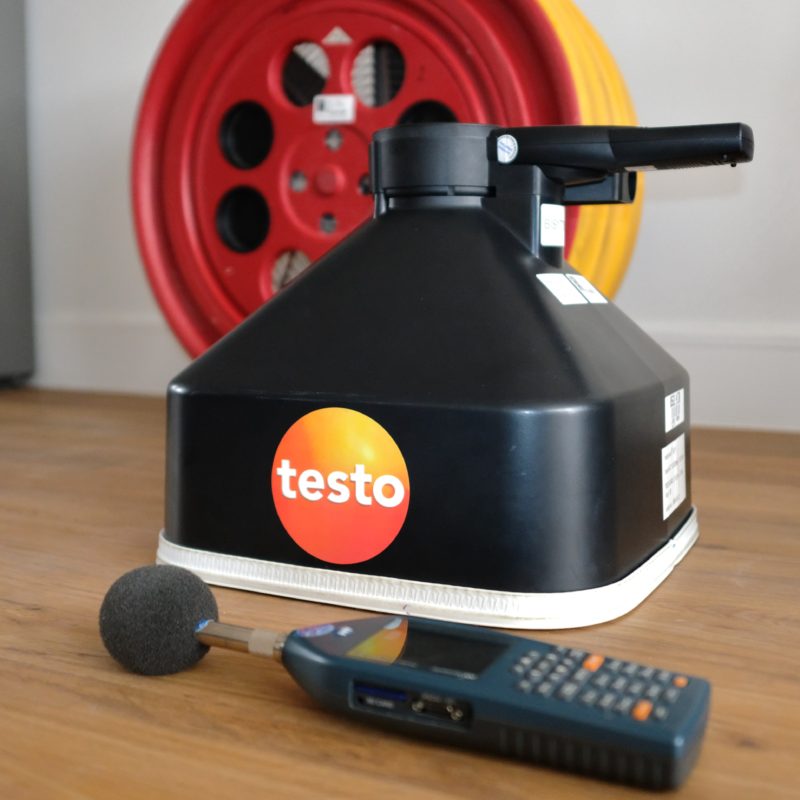Maintaining a buildings continuous air tightness barrier/envelope greatly helps with the energy efficiency of the building. Air tightness testing is carried out in order to detect the amount of air loss from inside of a building, to the low pressure externally. Air escaping in and out of a leaky building envelope can lead to poor energy efficiency and cold draughts.

Failing to maintain adequate air tightness can lead to up to 50% of heat loss from within a building to the outside atmosphere. This negates the advantages of investing in energy efficiency measures such as extra insulation, high spec boilers or ground source heat pumps. Air tightness testing should also be given a high priority at all times, otherwise not only will your building cost more to run but if the air tightness testing fails you may not be able to hand over the building.
It’s important to have an air tightness test completed on the property. This allows a figure – in m3/hr/m2) to be put on the amount of air gained and lost. The attained air leakage rate can then be measured against what’s acceptable and what’s not in the eyes of the building regulations.
Which Building Regulations Govern Air Tightness Testing?
Air tightness testing is governed by two different sets of regulations – Part L1A and Part L2A. Part L1A relates to all new dwellings, whereas Part L2A is the regulation used to govern air tightness in any commercial building, such as offices and public buildings. The compliance with these regulations is enforced by Building Control.
Air testing is also a component of both SAP (domestic) assessments and SBEM (commercial) assessments, both of which also have to be carried out on certain buildings. The SAP and SBEM assessments calculate the size of a building’s carbon footprint, which is greatly affected by how airtight the building happens to be.
What if I Fail My Air Tightness Test?
At APT Sound Testing we want your building to pass first time; however, if your building fails the initial air tightness test, we will be able to help you with a number of measures to ensure that 2nd test is success. Some of the techniques we can employ to identify potential problems are:
- Commercial Smoke Testing – We can fill the building with smoke, before pressurising the whole building; this will then provide a visible indication of the air leakage paths as the smoke will escape through them. For smaller dwellings we can use our “smoke pencils”.
- Thermal cameras – It is also possible to use infra-red cameras to detect where the hottest and coldest spots are in the development. This provides another way to locate air leakage paths.
We provide our clients with comprehensive proactive service providing you with a one stop solution for all your air tightness testing requirements, from envelope design reviews through to the final precompletion testing. If you require more information on how to prepare your building for an air tightness test please visit click here for our Air Tightness Checklist.
If you would like more information in regards to our air tightness testing and consultancy services then please contact us at info@aptsoundtesting.co.uk or call Darren Direct on 07775 623464.
